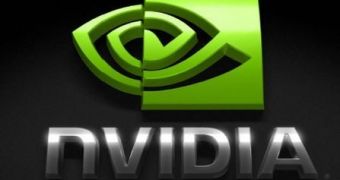The next generation of Intel processors are about to kick in, so chipset manufacturers are currently performing the latest trims and adjustments for their Intel-loving products. One of the most important supporter of Intel's architecture in the mainstream and high-end market is Nvidia, that is working on its upcoming MCP7A chipset.
Slated to arrive somewhere in April, the new chipset will accompany Intel's 45-nanometer Core 2 Duo E8300 processors. The MCP7A chipset will come with important improvements as compared to Nvidia's previous chipset offerings, such as HDMI and Hybrid SLI capabilities. The chipset will arrive on the market in eight distinct SKUs, but only seven of them will integrate DirectX 10-based graphics cores with high-definition video processing at 1080p and built-in HDCP (on the higher-end MCP7A-GL and MCP7A-J offerings).
There are no benchmarks available to reveal how powerful the onboard graphics processors will be, but the latest pieces of information show that they will all support Shader Model 4.0 and DirectX 10. One of the MCP7A chipset SKUs will come with an integrated workstation-class graphics core from NVIDIA's Quadro product line.
The new chipset will feature full support for the 1333 MHz front-side bus and will deliver 20 PCI-Express 2.0 lanes, that will allow setups such as 16x1 + 4x1. This will be the base of a cheaper, Hybrid SLI link made of a single GPU expansion card and the GPUs in the MCP7A chipset (if it is one of the seven SKUs to integrate a graphics core). The other two SLI chips, the MCP7A-SLI and MCP7A-GL, will come with 2 x8 PCIe 2.0 slots for dual expansion card capabilities.
The new chipset models to integrate graphics cores will feature 2 analog and 2 digital display heads. However, the high-end MCP7A-J will come in an improved version, which will feature 2 analog and 3 digital heads.
The chipset will also offer a wide range of connectors: up to 6 SATA 3.0 GB/sec ports, up to 12 USB 2.0 ports, integrated 10/100/1000 Mb/sec LAN and RAID 0, 1, 0+1, as well as RAID 5 support on the SATA interface.

 14 DAY TRIAL //
14 DAY TRIAL //